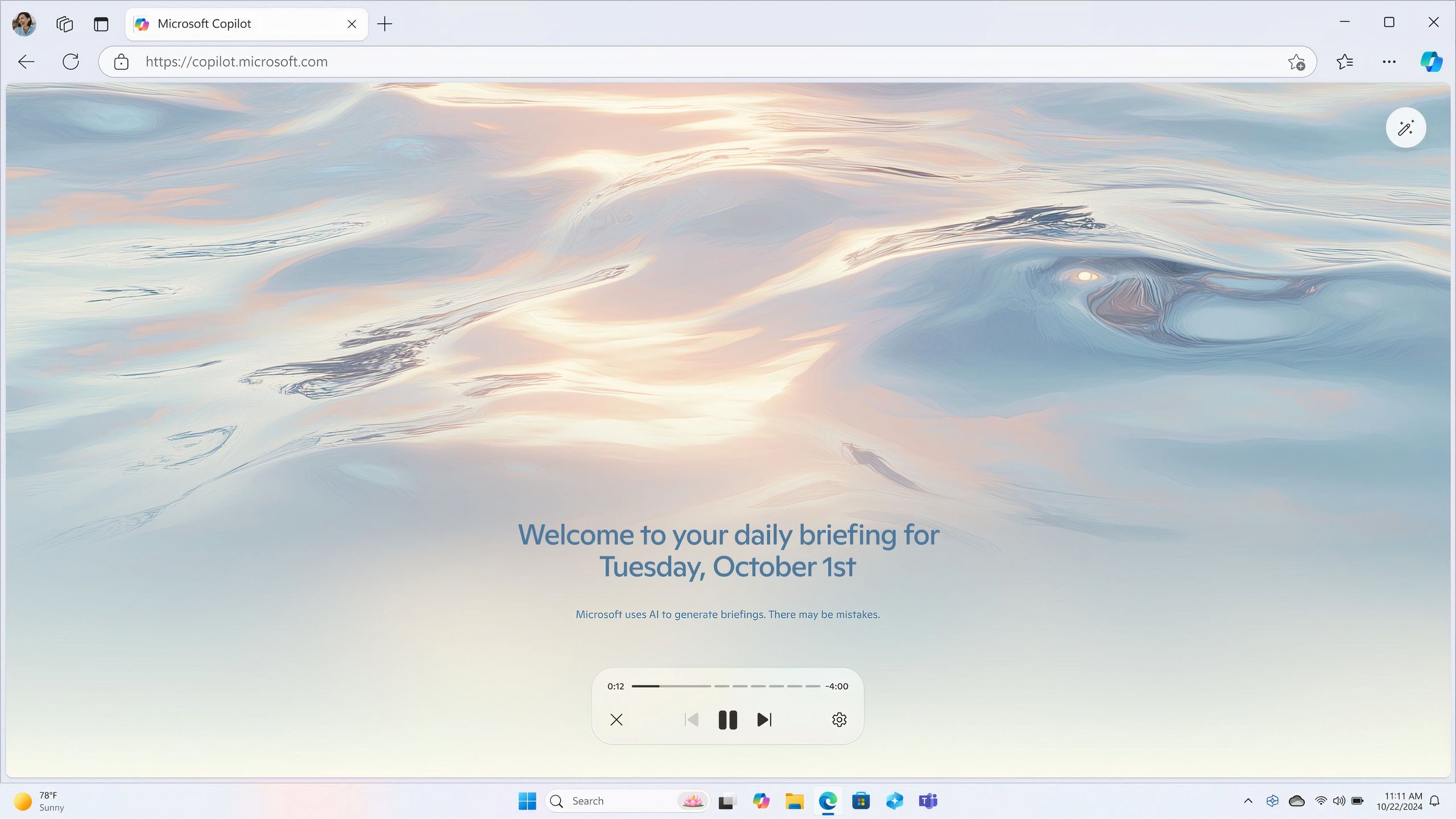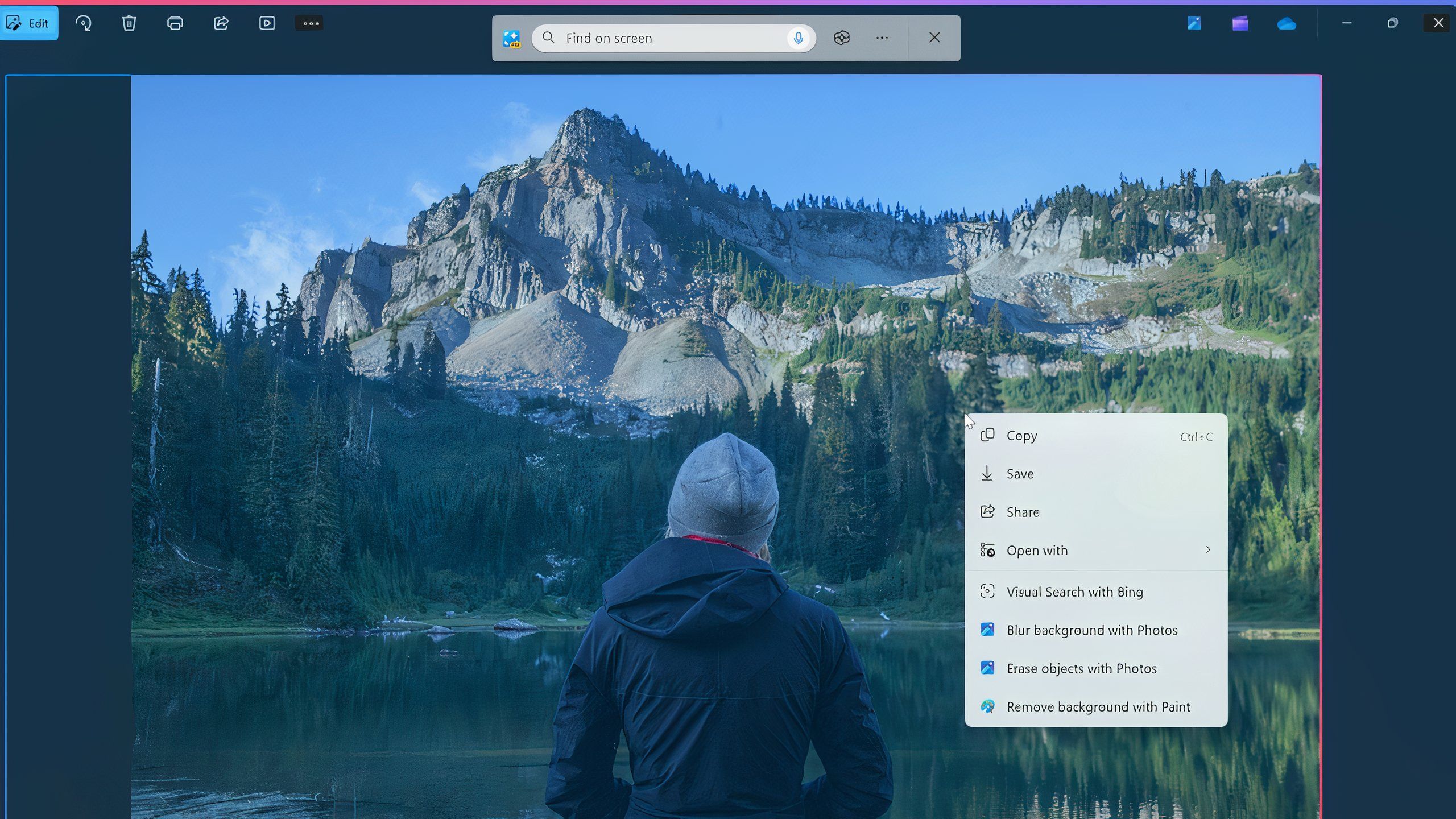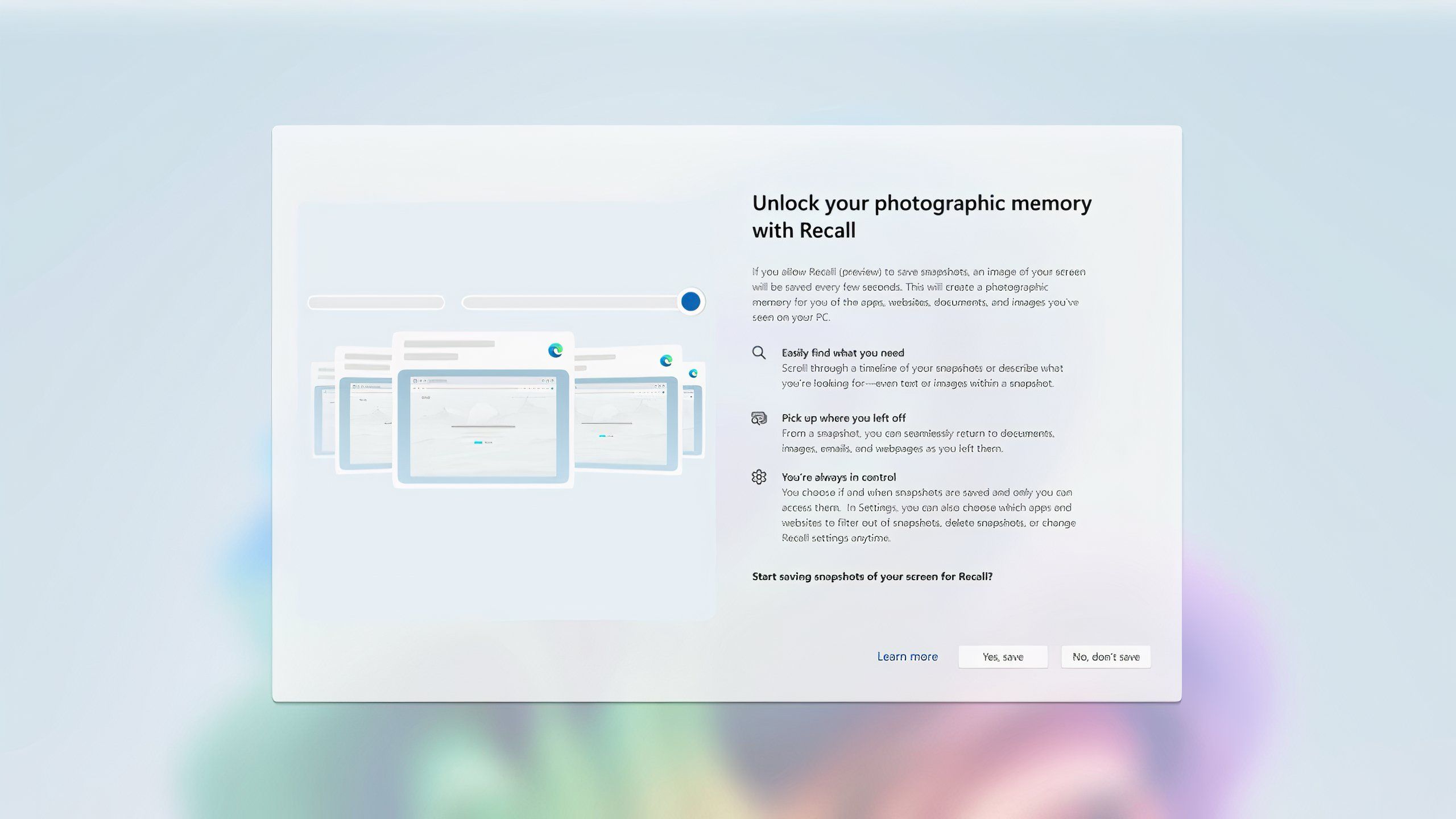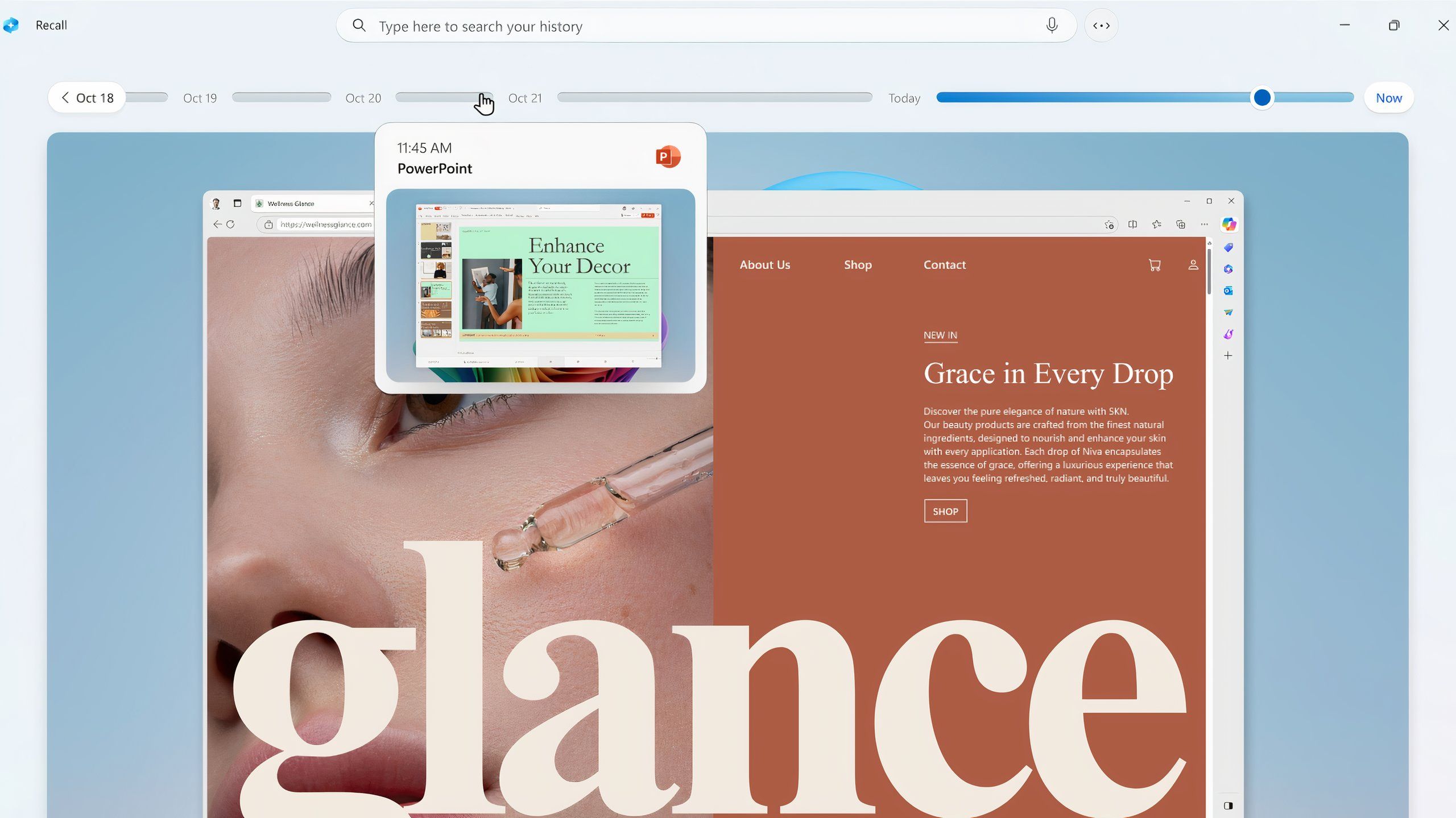Key Takeaways
- Microsoft has just unveiled its next leap forward in AI-based technologies.
- These new features will be incorporated directly into Windows 11, and will be available across Copilot+ PCs.
- The company is also re-introducing its controversial Windows Recall feature, this time with a much greater focus on user privacy and security.
Microsoft has just unveiled its plans for another big wave of AI, set to be incorporated into its flagship Windows 11 operating system. The company’s Copilot AI chatbot is slated to receive enhancements, a new Click To Do feature is being introduced, and the controversial Recall function is being reworked with privacy and security now at the forefront.
Except for the new Copilot features, the other new AI tools will be arriving exclusively on Copilot+ PC hardware. This product class is defined as PCs with a neural processing unit (NPU) capable of 40 trillion operations per second (TOPS) or greater. In other words, there’s a good chance that your existing laptop or desktop won’t reach the threshold to receive any of these additions — you’ll need a PC running on one of Qualcomm’s new Snapdragon X Plus or X Elite chips, or running on one of Intel’s new Core Ultra chips to partake in the AI fun.
The new Copilot app is slated to land on October 1, rolling out slowly across regions, languages, and platforms. The rest of the new AI features for Copilot+ PCs — including Windows Recall — will be arriving sometime in November. Microsoft intends to share these experiences first with Windows Insiders, followed by a broader rollout sometime next month.
Copilot+ PCs will soon receive a number of new AI-based experiences
Owners of eligible Windows 11 PCs can expect an upgraded Copilot AI companion, improved Windows Search, and a new Click to Do feature
Microsoft
First and foremost, Microsoft is refreshing the Copilot AI chatbot experience itself. The interface has been simplified “to be much cleaner, simpler, warmer, and all around more approachable,” along with the introduction of shorter and faster answers designed to make the chatbot more engaging to interact with.
Four new Copilot-based features are also on the way in the form of Copilot Voice, Copilot Vision, Copilot Daily, and Think Deeper.
Four new Copilot-based features are also on the way in the form of Copilot Voice, Copilot Vision, Copilot Daily, and Think Deeper. Copilot Voice allows for a natural back-and-forth conversation, in the style of Google’s Gemini Advanced. New voice options, the ability to interrupt on the fly, and more, are all part of this new experience.
Copilot Vision, in contrast, is built natively into the Edge browser, and works as a voice-based conversational tool for research purposes. The experience is dependent on whatever you happen to be currently searching for on the web, with the goal of highlighting and dialing-in on said content.
Microsoft
Copilot Daily, meanwhile, is a new daily AI-generated news and weather briefing system. Exact details are somewhat sparse at the moment, but it appears that the briefing will be incorporated directly into the Copilot interface, with the granular information itself being read out loud to the user.
Lastly, there’s the Think Deeper mode, a new button that provides “advanced reasoning to solve complex problems.” Microsoft provided the example of asking Copilot to plan a family reunion with all the complexities of a big family, which is a task that requires an advanced level of processing.
How well these four new Copilot tools will work when considering nuances and other human complexities, is something we’ll have to wait for and test out for ourselves.
Improved Windows Search capabilities are also being highlighted by Microsoft.
Improved Windows Search capabilities are also being highlighted by Microsoft. “AI-powered search makes it dramatically easier to find virtually anything. You no longer need to remember file names and document locations, nor even specific names or words,” says Yusuf Mehdi, Executive Vice President, Consumer CMO at Microsoft, in a recent statement.
In practical terms, this should mean that searching for files within File Explorer, or searching for settings within the Settings app, should be easier and require less work from the user. For example, searching for a Canary bird within a folder will bring up photos of said Canary, even if the image file isn’t named with specific reference to the bird.
Microsoft
Then there’s the all-new Click to Do feature, which is particularly interesting — it works by using AI to understand the contents displayed on screen, and then surfaces shortcuts and actionable items based on context. For example, bringing up Click to Do while viewing an image of a cat, might pull quick actions such as Visual Search with Bing (a reverse image search), blurring or removing the background of the image, erasing objects within the image, and more.
Microsoft says that Click to Do works on any window, document, image, or video.
Microsoft says that Click to Do works on any window, document, image, or video. The feature is quite similar in concept to Google’s Circle to Search tool, though it’s accessed via pressing the Windows key and clicking on-screen as opposed to performing a circle gesture.
Copilot+ PCs are also getting some additional creative capabilities, with AI-enhancements across both the Photos and the Paint apps. New generative erase and fill capabilities, as well as a Super Resolution for upscaling blurry images, are arriving alongside the Copilot and Click to Do upgrades.
Windows Recall receives a major security and privacy boost
After a lot of initial backlash, Microsoft is confident that it’s done things right this time around
Microsoft
Windows Recall is an AI-based feature that’s designed to regularly take screenshots of a PC’s display, which are then saved in a central location for quickly referring back to a later time. The AI indexes on-screen words and images, which enables natural language search as well as a scrollable timeline. In theory, this should enable easy access to in-app functions, files, and websites previously visited on the PC.
Recall was originally meant to be the marquee AI feature shipping on all new Copilot+ PCs. Unfortunately for Microsoft, the feature was quickly dealt a devastating PR blow.
Recall was originally meant to be the marquee AI feature shipping on all new Copilot+ PCs. Unfortunately for Microsoft, the feature was quickly dealt a devastating PR blow due to concerns surrounding privacy and security, and the company ended up pulling the feature at the eleventh hour.
Microsoft says that it has introduced extensive measures to ensure Recall data remains private, secure, and within user’s control. In particular, new architectural additions include the enhanced protection of data, achieved by encrypting snapshots via individual keys protected within a VBS Enclave.
Microsoft
Additionally, Recall will now be an opt-in experience during Windows 11’s setup process, as opposed to being enabled by default as was initially planned to be the case. Windows Hello biometric authentication will now be leveraged each time a user attempts to access Recall snapshot data, and sensitive information from websites (like passwords) will be automatically detected to avoid unwanted recordings.
Microsoft envisions Windows Recall as a powerful PC tool that enables an almost photographic memory.
Microsoft envisions Windows Recall to be a powerful PC tool that enables an almost photographic memory of sorts, and the feature certainly has the potential to radically change how we interact with — and conceive of — computers. Perhaps the feature will become a staple of personal computing in the years to come.
On the other hand, many argue that the feature is creepy and invasive at best, and downright dystopian at worst. Once Recall finally hits the public in November, it’ll be interesting to see whether consumers ultimately embrace the tool wholeheartedly, or reject it at a deep and foundational level.
Trending Products

Cooler Master MasterBox Q300L Micro-ATX Tower with Magnetic Design Dust Filter, Transparent Acrylic Side Panel, Adjustable I/O & Fully Ventilated Airflow, Black (MCB-Q300L-KANN-S00)

ASUS TUF Gaming GT301 ZAKU II Edition ATX mid-Tower Compact case with Tempered Glass Side Panel, Honeycomb Front Panel…

ASUS TUF Gaming GT501 Mid-Tower Computer Case for up to EATX Motherboards with USB 3.0 Front Panel Cases GT501/GRY/WITH Handle

be quiet! Pure Base 500DX ATX Mid Tower PC case | ARGB | 3 Pre-Installed Pure Wings 2 Fans | Tempered Glass Window | Black | BGW37

ASUS ROG Strix Helios GX601 White Edition RGB Mid-Tower Computer Case for ATX/EATX Motherboards with tempered glass, aluminum frame, GPU braces, 420mm radiator support and Aura Sync

CORSAIR 7000D AIRFLOW Full-Tower ATX PC Case â High-Airflow Front Panel â Spacious Interior â Easy Cable Management â 3x 140mm AirGuide Fans with PWM Repeater Included â Black













